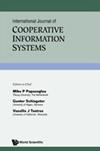把语言说得死去活来
IF 0.5
4区 计算机科学
Q4 COMPUTER SCIENCE, INFORMATION SYSTEMS
International Journal of Cooperative Information Systems
Pub Date : 2017-01-01
DOI:10.5204/IJCIS.V10I1.148
引用次数: 0
摘要
19世纪末,当美国开始非法占领夏威夷王国时,语言教学被一种与精英主义和文化优势有关的方法——语法翻译——所主导。从那时起,语言教学有了重大发展。其中包括“交际语言教学”(CLT)的发展,这是一种旨在鼓励学习者在文化上适当的语境中使用目的语进行真正交流的方法。然而,对20世纪第二个十年的夏威夷语课程样本的分析显示,这些证据都很少。相反,一种让人想起语法翻译方面的方法非常明显,老师的谈话,通常是英语,每次都占据了一半以上的课程,而且有相当多的证据表明,许多学生感到困惑、沮丧和很少参与。这表明需要对所有影响夏威夷语教学的因素进行全面审查,特别是课程设计和教师ISSN 1837-0144©国际批判性土著研究杂志2培训。当语言教师常常用殖民者的语言讲课时,语言死亡继续尾随那些迄今尚未消亡的土著语言,这已不再是可能接受的事实。本文章由计算机程序翻译,如有差异,请以英文原文为准。
Talking the language to death
In the late 19th century, when the United States began its illegal occupation of the Hawaiian Kingdom, the teaching of languages was dominated by an approach— grammar translation—that has been associated with elitism and cultural dominance. Since then, there have been major developments in language teaching. Among these has been the development of “communicative language teaching” (CLT), an approach intended to encourage learners to use the target language for genuine communication in culturally appropriate contexts. However, analysis of a sample of Hawaiian language lessons taught in the second decade of the 20th century revealed little evidence of any of these. Instead, an approach reminiscent of aspects of grammar translation was very much in evidence, with teacher talk, often in English, occupying over half of the lesson in each case, and with considerable evidence of confusion, frustration and minimal participation on the part of many of the students. What this suggests is the need for a comprehensive review of all those factors that have an impact on the teaching and learning of Hawaiian, including, in particular, curriculum design and teacher ISSN 1837-0144 © International Journal of Critical Indigenous Studies 2 training. It is no longer possible to accept that while language teachers talk, often in the language/s of colonisers, language death continues to stalk those indigenous languages that have so far failed to succumb.
求助全文
通过发布文献求助,成功后即可免费获取论文全文。
去求助
来源期刊

International Journal of Cooperative Information Systems
工程技术-计算机:信息系统
CiteScore
2.30
自引率
0.00%
发文量
8
审稿时长
>12 weeks
期刊介绍:
The paradigm for the next generation of information systems (ISs) will involve large numbers of ISs distributed over large, complex computer/communication networks. Such ISs will manage or have access to large amounts of information and computing services and will interoperate as required. These support individual or collaborative human work. Communication among component systems will be done using protocols that range from conventional ones to those based on distributed AI. We call such next generation ISs Cooperative Information Systems (CIS).
The International Journal of Cooperative Information Systems (IJCIS) addresses the intricacies of cooperative work in the framework of distributed interoperable information systems. It provides a forum for the presentation and dissemination of research covering all aspects of CIS design, requirements, functionality, implementation, deployment, and evolution.
 求助内容:
求助内容: 应助结果提醒方式:
应助结果提醒方式:


